Located in the Land and Garden Preserve area of Mount Desert Island, Thuya Garden is garden that everyone can appreciate. An English style garden nestled inside the natural environment, with both soothing woodlands and flamboyant color. The design of the land and garden are the conception of two architects/designers, the original being Joseph Curtis and later Charles Savage. You can learn more about the history of the garden from the Land & Garden Preserve website.
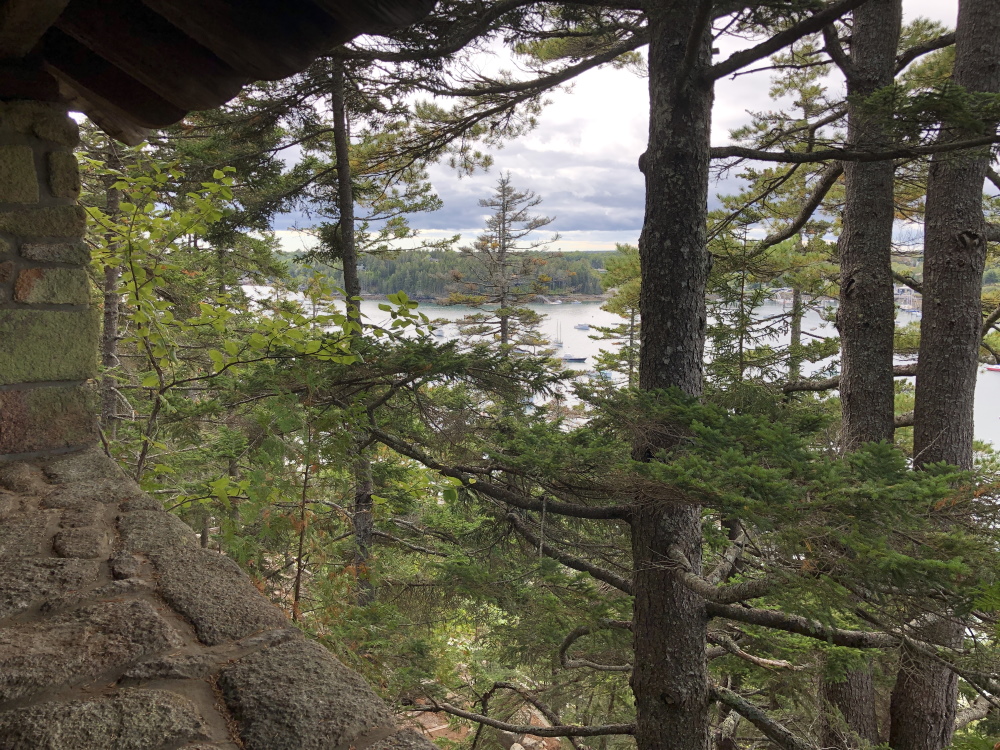
We accessed Thuya Gardens from the lower parking lot and hiking the Asticou Terraces trails, stopping along the shelters and lookouts along the way. We assented the trails through woodlands with the harbor below, allowed us to enjoy the location and natural environment before entering the man influenced gardens.
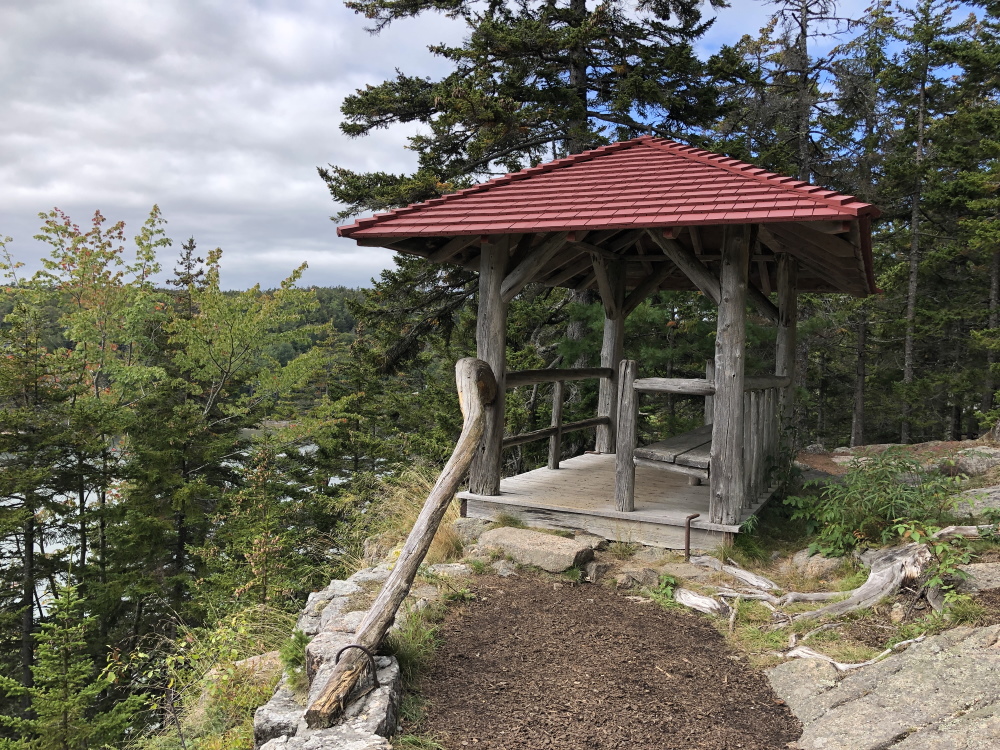
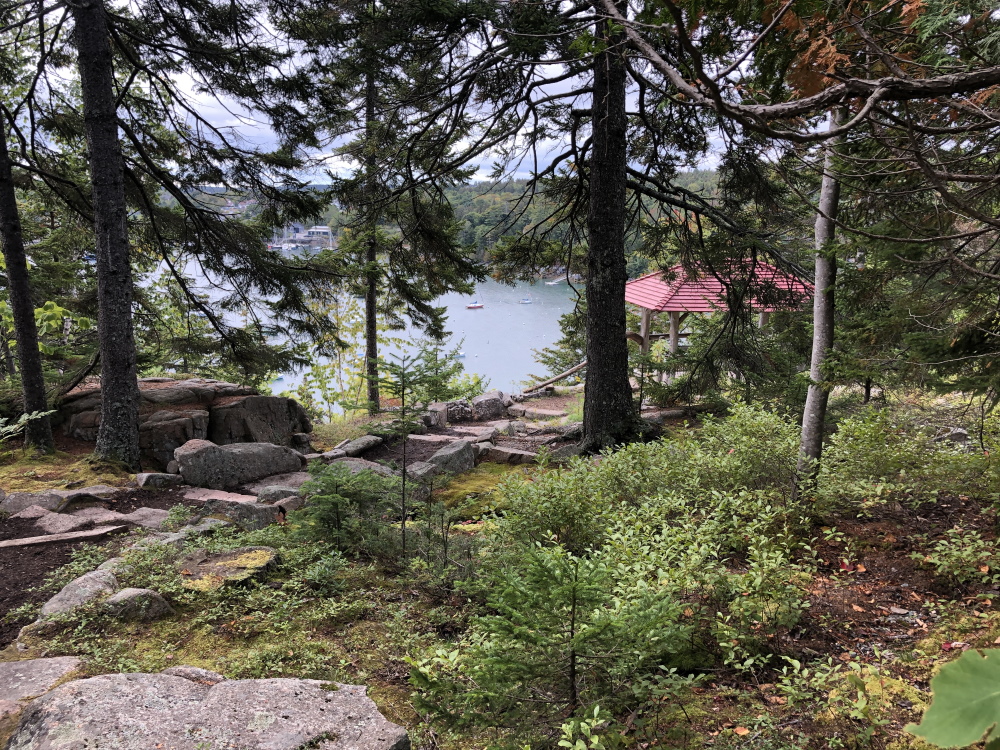
Located inside Thuya Lodge, includes period furniture from Joseph Curtis’ time and a botanical library added by Charles Savage. Reading the spines of all the books you are reminded all the great gardeners, botanists and naturalists that have been sharing their knowledge for centuries.
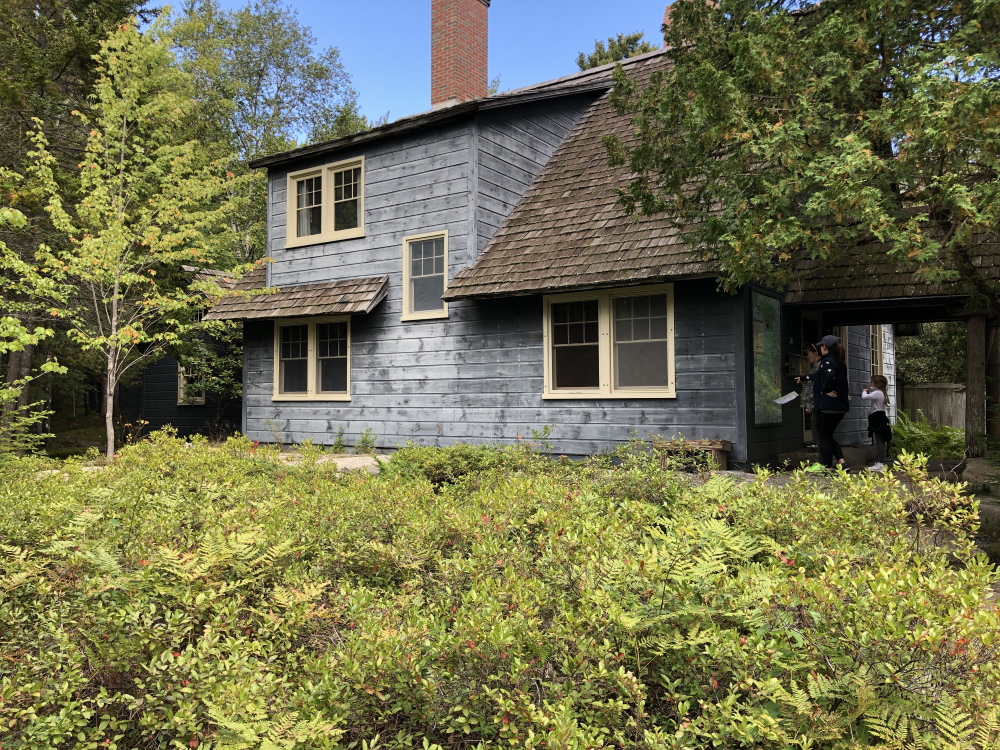
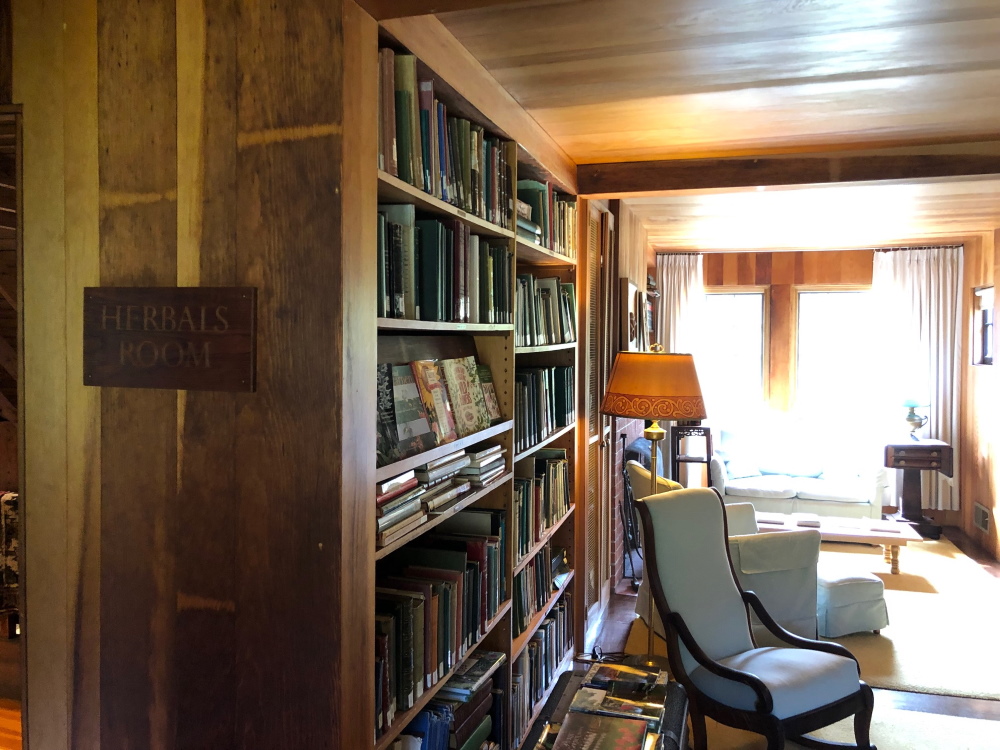
The herbaceous border was designed in the style of Gertrude Jekyll, is build on a two axes with a combination of 50% perennials and 50% annuals. We visited in Late September, and the flowers were extended to their peek bloom. Walking the garden, it was a great location for finding dahlia varieties, and how to incorporate with other perennials and annuals. When walking the borders, you really needed to walk on all sides and in each direction to see how they plants flowed from combo to combo. I have placed two Thuya planting combo breakdowns at the end of the post.
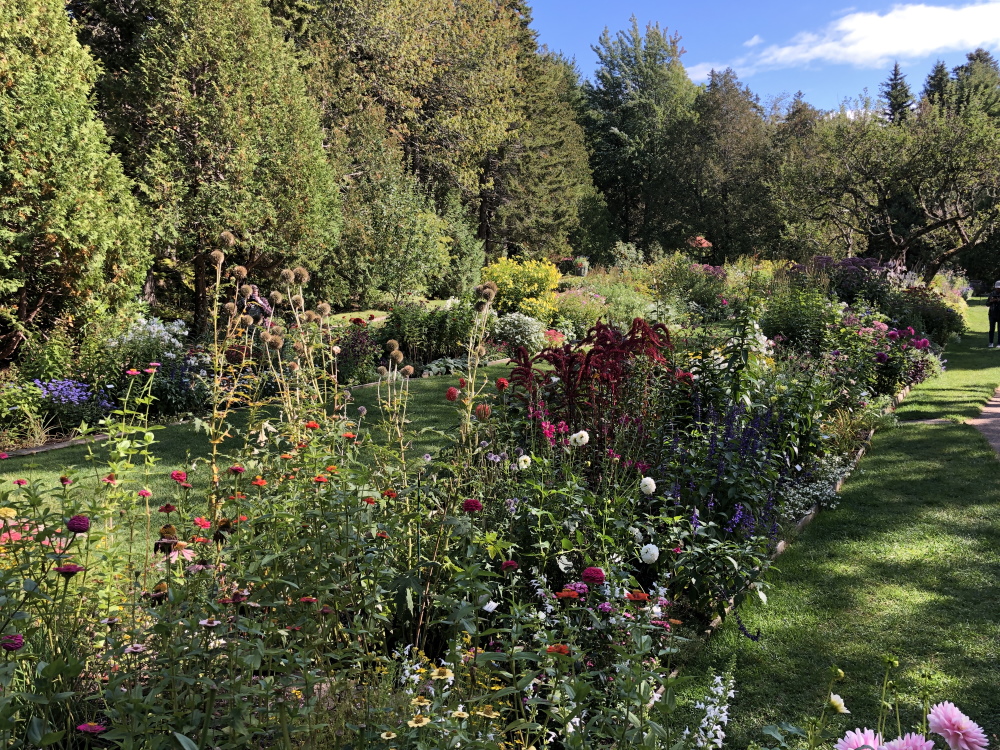
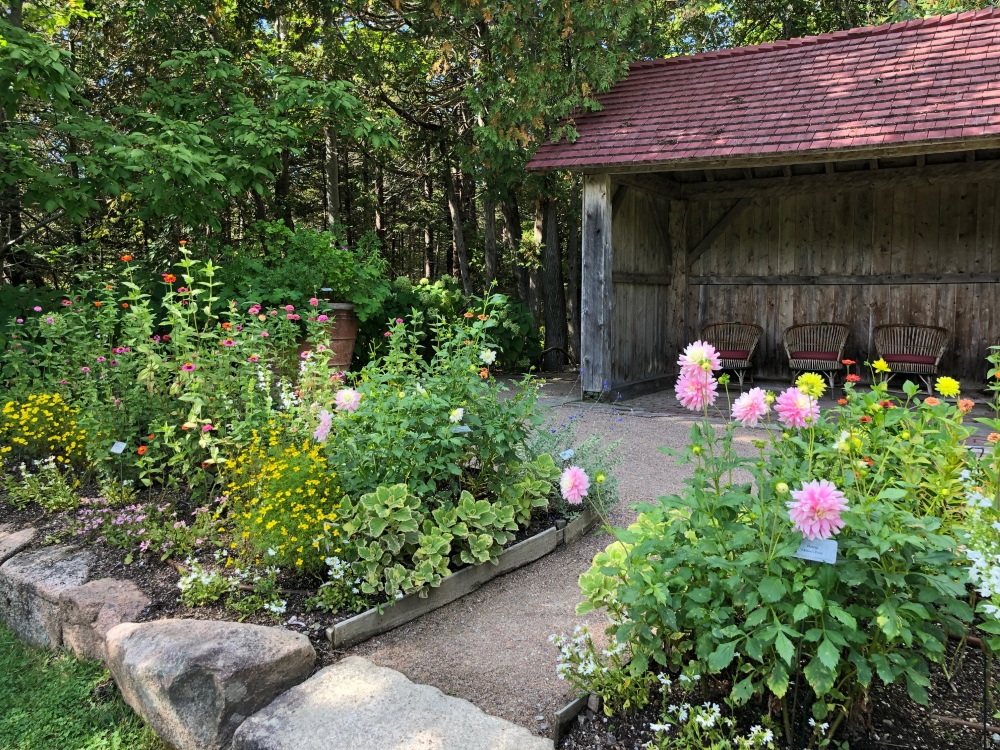
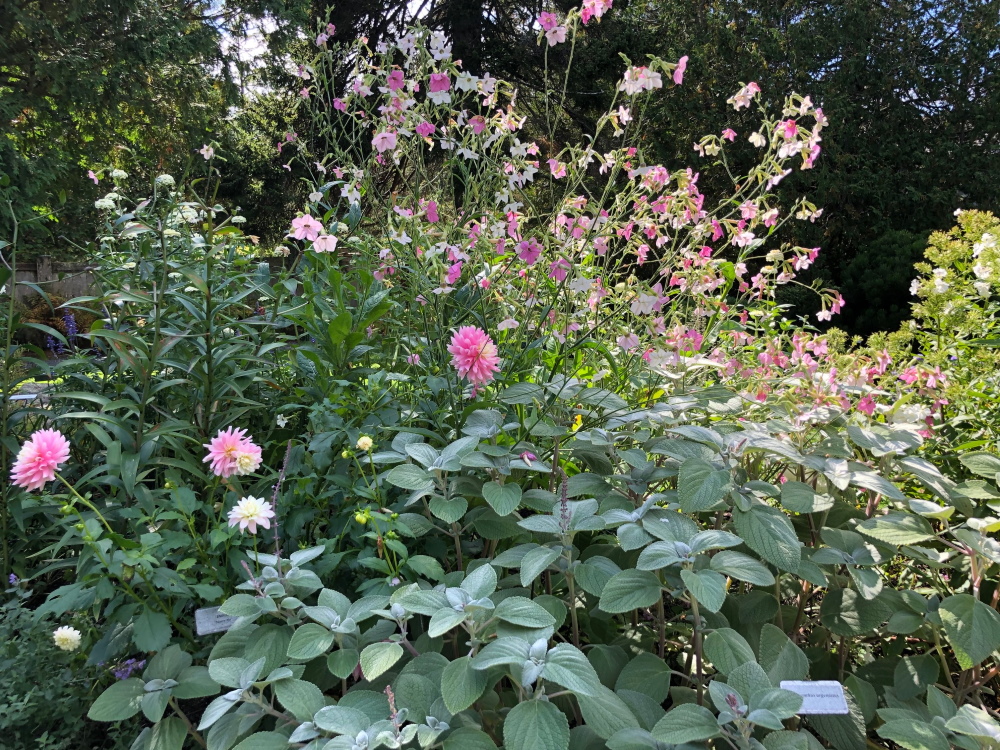
Beyond the herbaceous border are the natural gardens with a Japanese influence. I really wish we could grow moss like they can in Maine, the carpeted woodland floor rolling over rocks is so calming.
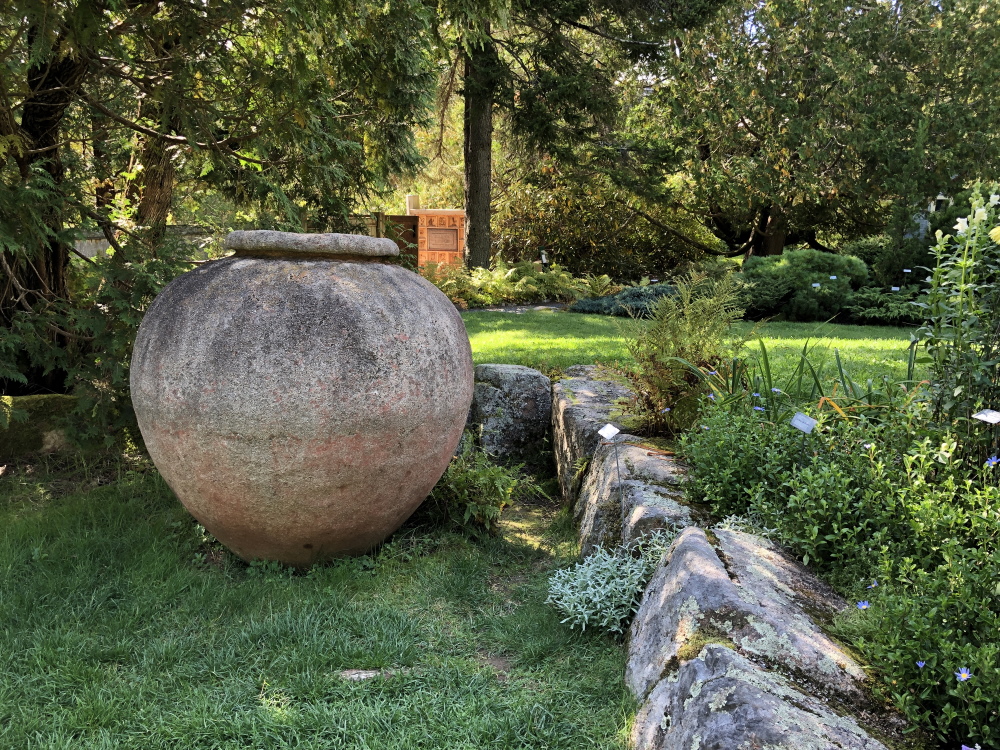
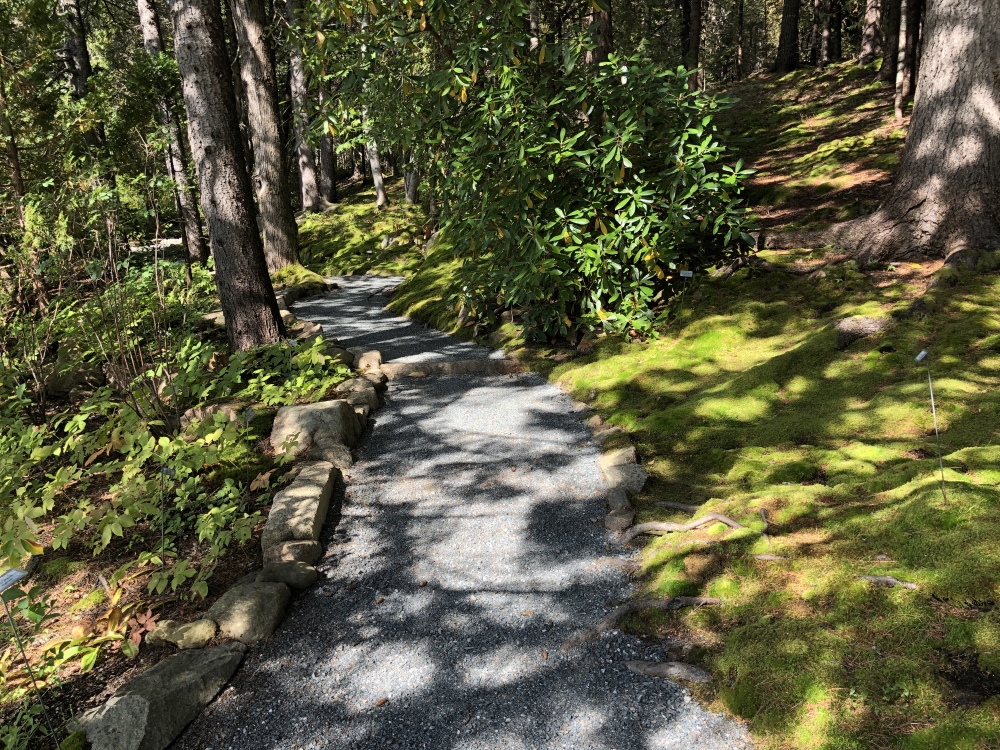
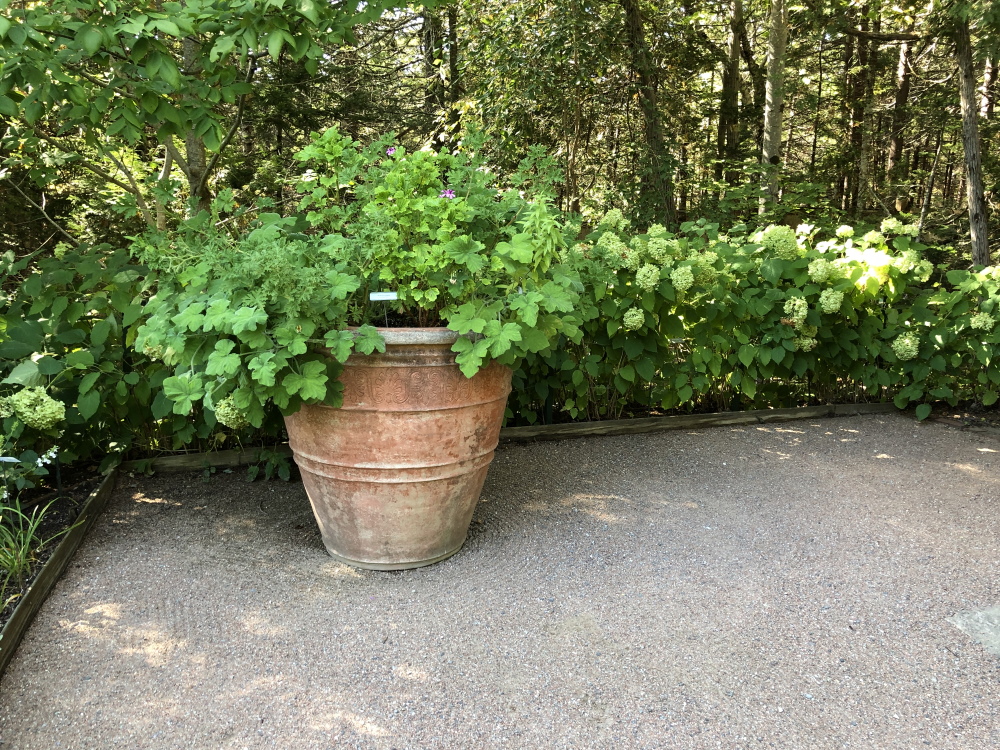
Studying stone work was a continuing theme from both my trips this summer. I have talked before about looking down in gardens and noticing the surfaces you are walking. I think gardeners forget about this very important element when walking gardens, instead they focus on the plants. This image is of the floor in the structure at the end of the herbaceous border, with a mix of materials and shapes.
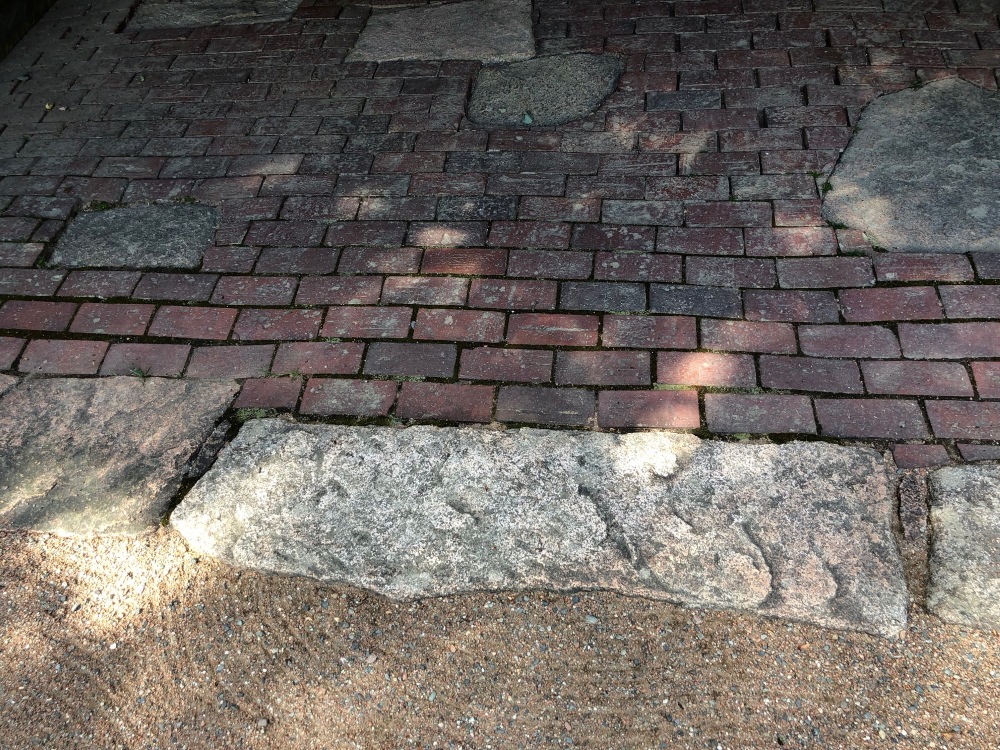
In addition to the of amazing stone work, the woodworking at Thuya was amazing.
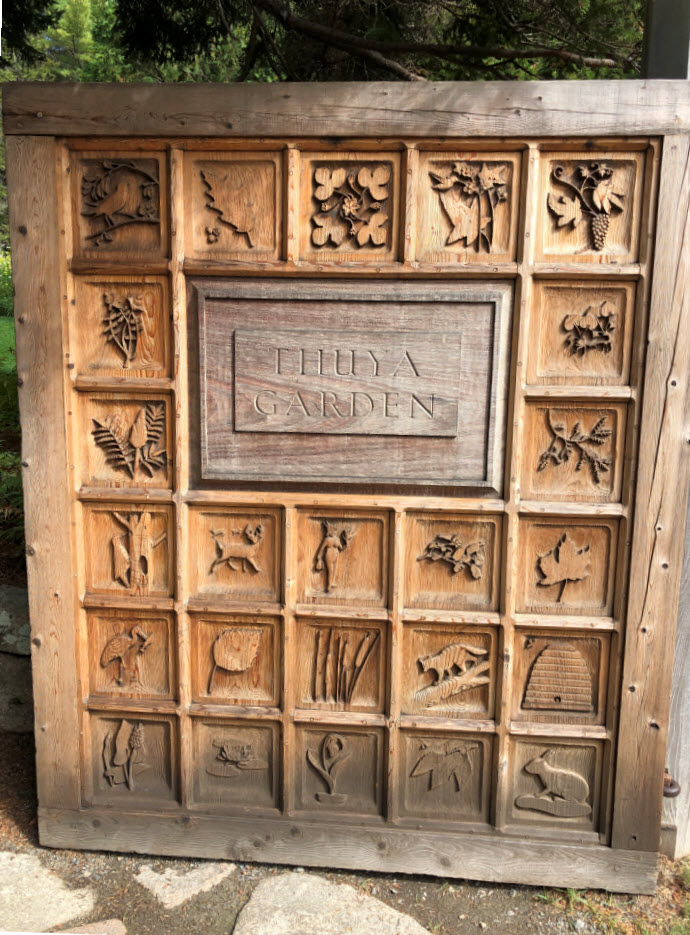
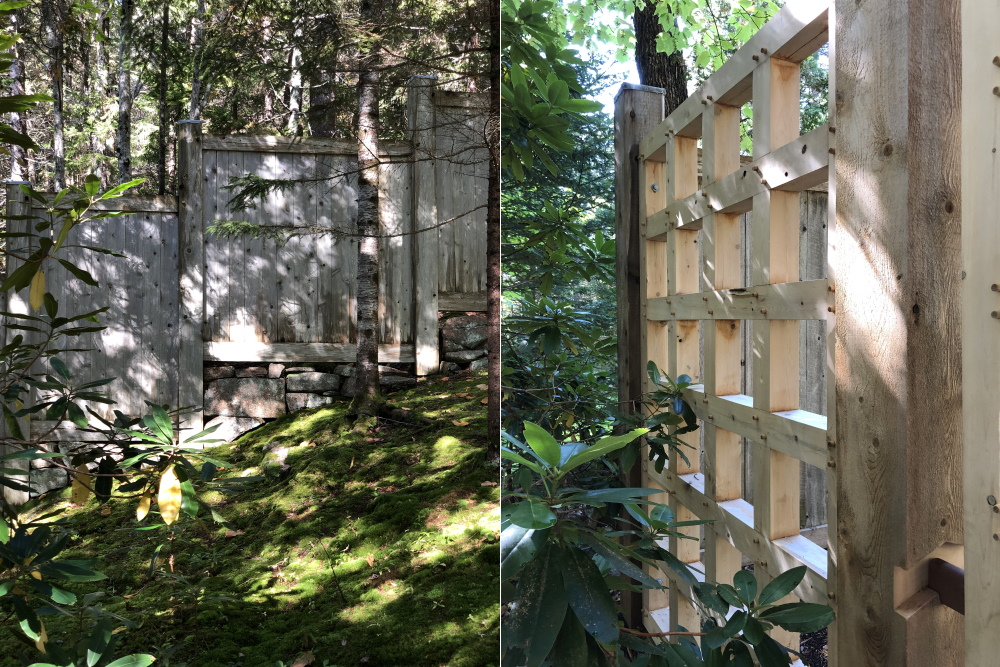
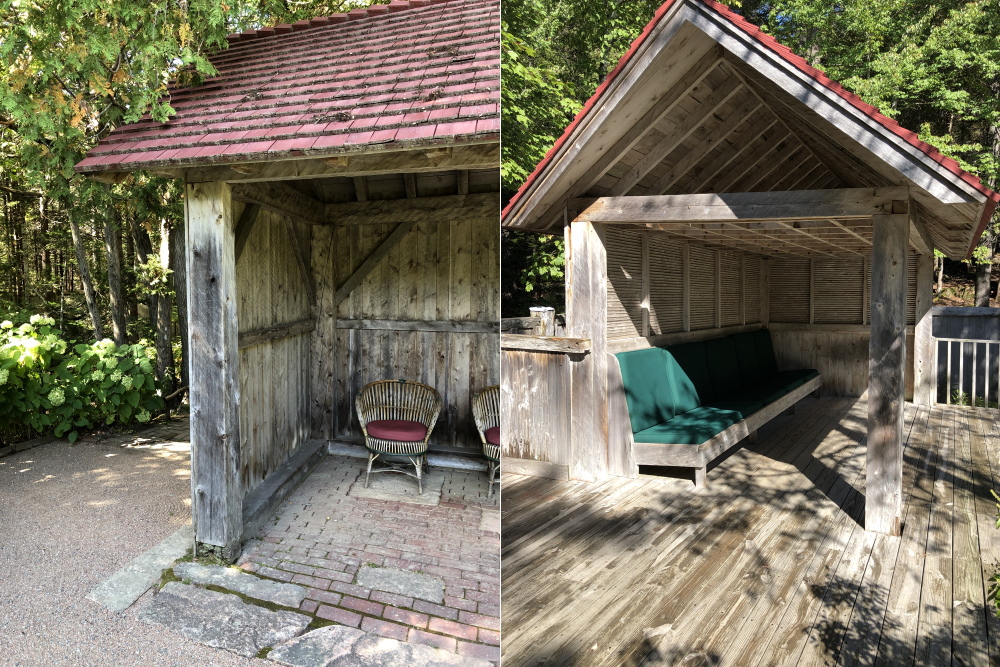
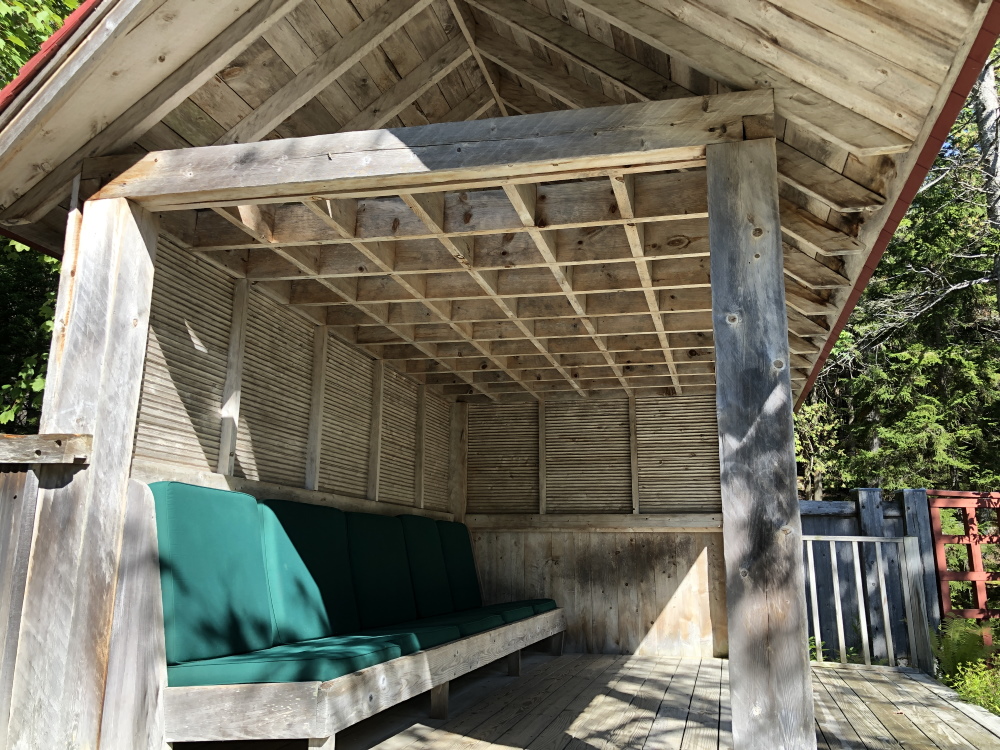
TAKING THUYA HOME When you are touring gardens it is difficult to see how it can be applied to the home garden. Sometimes you just need some help looking for the practical (or completely impractical) application options. I will try to include some ideas home gardeners can apply from each of these traveling garden posts. At Thuya, I was really inspired about two particular planting combos that included dahlias with annuals and perennials. Planting combos are great items to document while touring gardens, even better if the gardens include plant id tags, however there are some great tips I will share later to help you id plants from photos. Here are two Thuya combos from the herbaceous borders with plant ids:
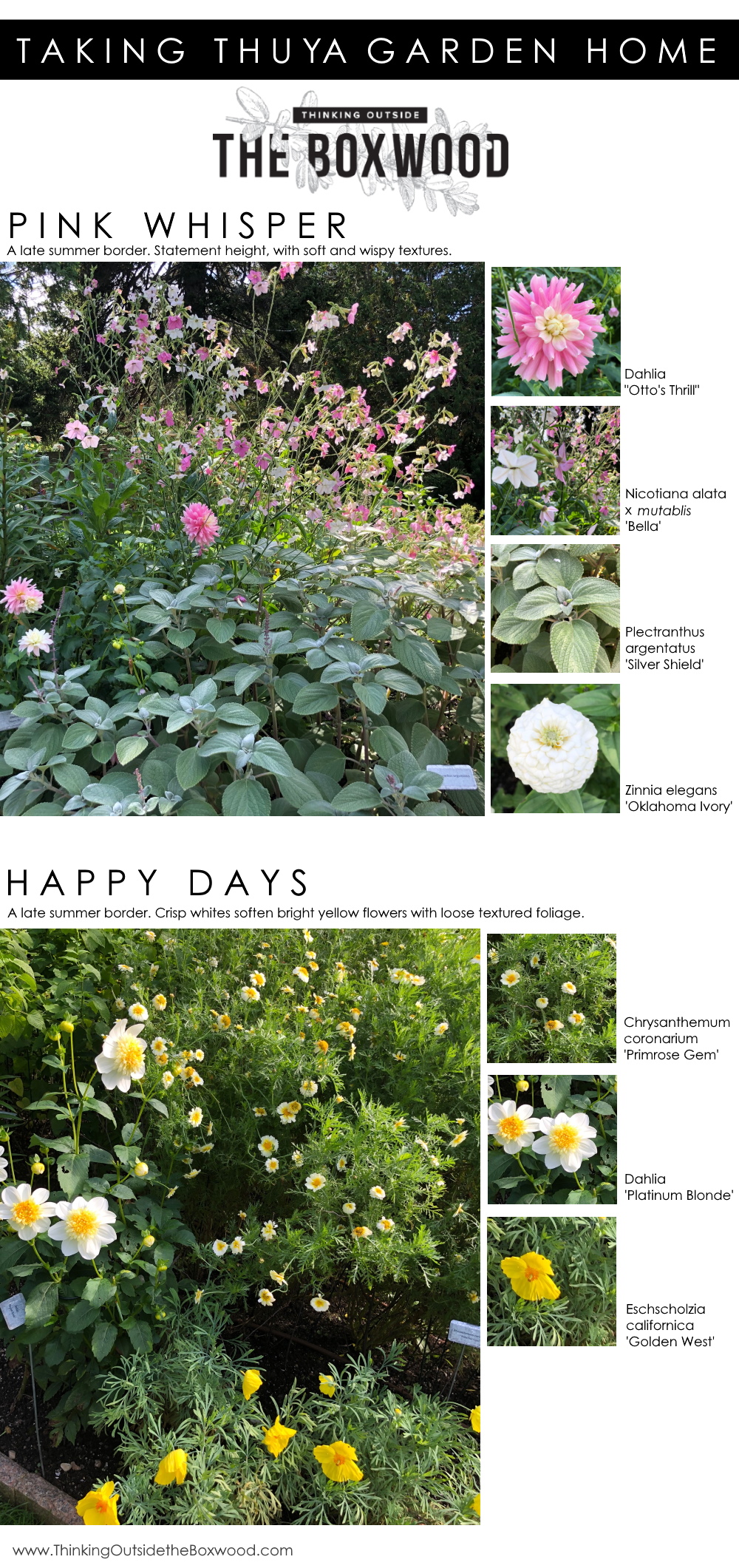
Here are suppliers where you can order the dahlias and seeds. For the Plectranthus, try your local nursery in the early summer. Or if anyone has a great direct to consumer supplier let me know. I will update the link.
PINK WHISPER:
- Dahlia ‘Otto’s Thrill’
- Nicotiana alata x mutablis ‘Bella’
- Zinnia elegans ‘Oklahoma Ivory’
- Plectranthus argentatus ‘Silver Shield’ (Check your local nursery/garden center)
HAPPY DAYS:
- Dahlia ‘Platinum Blonde’
- Chrysanthemum coronarium ‘Primrose Gem’
- Eschscholzia californica ‘Golden West’

What a great reminder of an aMAINEzing trip. 🙂
This was one of my favorite visits.
I could not agree more.
of horticultural and botanical books in Thuya Lodge. Escaping the formalities of society; the English bordering flower beds, transition gracefully into the wooded forests of Maine. The surrounding aspiring rugged wilderness captivates, while the cultivated gentle pleasantries of civilization soothe ones thoughts, all overlooking majestically the waters of Northeast Harbor. These tributes sought after by the original benefactor continue to this day as the herbaceous plantings, some being the acquired descendants from the 1956 dismantling of Beatrix Farrand’s, Reef Point estate formerly located in Bar Harbor. Beatrix Ferrand interpreted the work of Gertrude Jekyll, a famous garden designer and author of England of that time period.